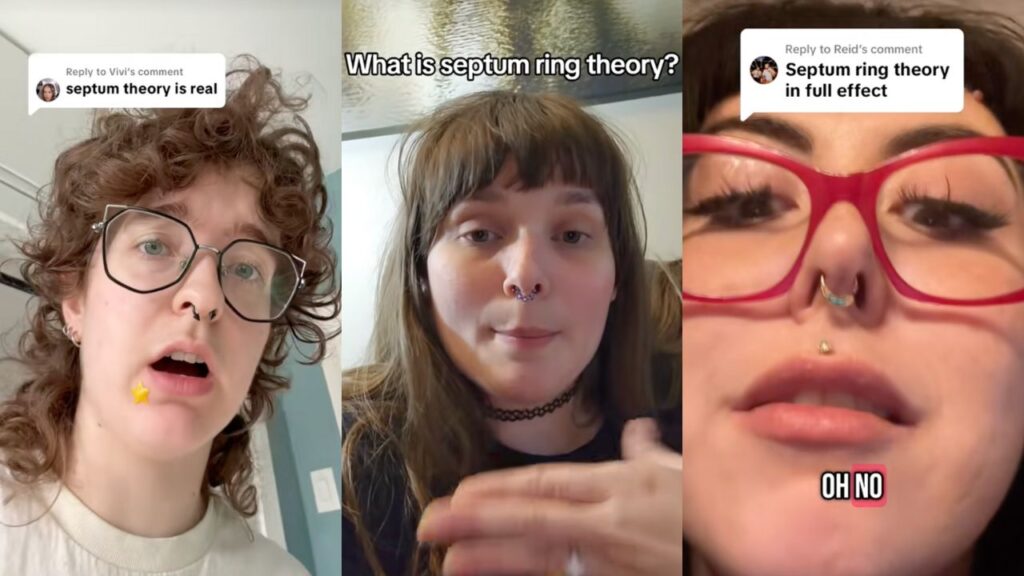
Move over Bean Soup, Burnt Toast, and Taxi Cab theories—there’s a new viral sensation overrunning TikTok’s For You Page (FYP). The so-called Septum Ring Theory has captured the attention of millions, sparking debates and discussions across the platform.
For those not immersed in TikTok culture, users have a penchant for turning quirky ideas into viral theories. These theories often lack scientific backing but gain traction through their relatability or humor. The Bean Soup Theory, for instance, humorously suggests that social media users make everything about themselves, while the Burnt Toast Theory implies that minor inconveniences serve a greater cosmic purpose.
The latest addition, the Septum Ring Theory, posits that individuals with pierced septums are prone to oversharing their traumas online. This controversial idea was first introduced by Torraine Walker, a self-proclaimed ‘men’s rights activist’, back in 2017. Walker claimed that many viral videos addressing misogyny or promoting progressive ideas were created by women with septum piercings. Fast forward to 2025, and the theory has evolved into a broader stereotype, suggesting that those with a ‘woe-is-me’ attitude often sport a nose ring.
The Origins and Evolution of TikTok Theories
The rise of TikTok theories is not an isolated phenomenon. Social media platforms have long been breeding grounds for viral content and meme culture. Theories like the Septum Ring Theory thrive in environments where humor, relatability, and a touch of absurdity reign supreme.
Historically, the internet has seen similar trends. Memes and stereotypes often emerge from cultural observations, albeit exaggerated or unfounded. For instance, the meme suggesting all non-binary individuals are baristas with blue hair, or the stereotype that any assertive woman is a ‘Karen’, have roots in real societal behaviors but are blown out of proportion for comedic effect.
Reactions and Rebuttals
The Septum Ring Theory has not gone unchallenged. Many TikTok users with septum piercings have taken to the platform to debunk the stereotype, often with humor and pride. One TikToker quipped, “It’s a piece of metal that I can take out at any time, but can you bring back the light into your mother’s eyes?” Others have embraced the stereotype, turning it into a badge of honor rather than an insult.
Laura Masia, a senior entertainment reporter at PEDESTRIAN.TV, has sported a septum ring for over a decade. She remarked, “As a left-leaning, feminist gal, I’m proud to fall into the stereotype.” Her sentiment echoes a broader trend of reclaiming and redefining stereotypes within marginalized communities.
The Future of Viral Theories on TikTok
While the Septum Ring Theory enjoys its moment in the spotlight, the nature of TikTok suggests it will soon be replaced by another viral sensation. The platform thrives on rapid content turnover, and users are always on the lookout for the next big thing. Whether it’s the Yellow Pillow Theory or the Joey from Friends Theory, TikTok’s landscape is ever-evolving, and today’s viral sensation may be tomorrow’s forgotten trend.
In conclusion, the Septum Ring Theory serves as a reminder of the internet’s ability to amplify and distort cultural observations. While some may find humor or relatability in these theories, it’s essential to approach them with a critical eye and recognize their limitations as stereotypes rather than scientific truths.






